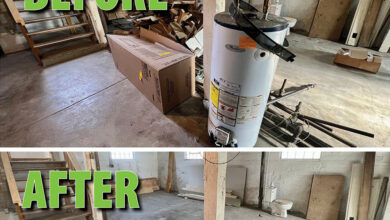
L-Serine is a non-essential amino acid essential for protein synthesis, cellular growth, and various metabolic pathways. It plays a key role in the production of other amino acids, nucleotides, and phospholipids. Due to its wide-ranging applications in the food, pharmaceutical, and cosmetics industries, there is a growing demand for cost-effective and sustainable L-serine production cost. L-serine is primarily produced either through fermentation processes or chemical synthesis, each with unique cost structures.
This article explores the various costs involved in producing L-serine, covering aspects such as raw materials, production processes, labor, equipment, utilities, environmental compliance, and strategies for reducing expenses while maintaining high-quality standards.
Raw Material Costs
The primary raw materials used in L-serine production depend on the chosen production method. The two main approaches are microbial fermentation and enzymatic synthesis, each with specific raw material requirements.
- Fermentation Substrates: When microbial fermentation is used, substrates like glucose, corn syrup, or other carbohydrate sources are required to feed the microorganisms that produce L-serine. The cost of these substrates is affected by agricultural production, regional availability, and market demand. Price fluctuations in these feedstocks can directly impact overall production costs.
- Microbial Cultures: Specific strains of bacteria or yeast are often engineered to synthesize L-serine. Common microorganisms include Escherichia coli and Corynebacterium glutamicum. Costs associated with microbial cultures include procurement, maintenance, and genetic modifications needed to optimize productivity.
- Enzymes and Chemical Reagents: If enzymatic synthesis is employed, specific enzymes are used to catalyze reactions that produce L-serine from other amino acids or chemical precursors. The costs of enzymes and reagents vary based on purity, volume, and the specific production process.
- Nutrient Supplements: Additional nutrients, such as nitrogen sources, vitamins, and minerals, are often added to the fermentation medium to support microbial growth and enzyme activity. The specific nutrient requirements depend on the microorganism used and the fermentation process parameters.
Raw material costs fluctuate based on global agricultural conditions, supply chain stability, and regional demand. Many manufacturers establish long-term supplier contracts to help stabilize these costs and secure a reliable supply of essential materials.
Request For Free Sample: https://www.procurementresource.com/production-cost-report-store/l-serine/request-sample
Production Process Costs
L-Serine production involves multiple stages, including fermentation, enzymatic reactions, and purification. Each production method has unique costs depending on the process used, equipment needed, and scale of production.
- Fermentation: Microbial fermentation is a popular method for producing L-serine due to its scalability. In this process, microorganisms are cultured in large tanks under controlled conditions. Key costs include the substrates, fermentation tanks, and energy required for temperature control, aeration, and pH regulation. Fermentation is highly energy-intensive, so efficient monitoring systems and experienced operators are essential to optimize yields.
- Enzymatic Synthesis: If enzymes are used to convert precursor compounds into L-serine, the process generally involves controlled reactions in bioreactors. This method requires precise temperature and pH control and involves using expensive enzymes and substrates. Although enzymatic synthesis can be costly, it is often more environmentally friendly and produces fewer byproducts, making it suitable for high-purity L-serine production.
- Extraction and Purification: Once L-serine is produced, it must be extracted and purified. Common techniques include filtration, centrifugation, and chromatography. Each purification stage requires additional equipment and chemicals, such as solvents, contributing to the overall production cost. The purity level needed for pharmaceutical or food-grade L-serine impacts the choice of purification techniques and associated costs.
- Drying and Crystallization: To produce a stable, shelf-ready product, L-serine is often dried and crystallized. Techniques such as spray drying, freeze drying, or crystallization are used. These methods require energy and specialized equipment, contributing to operational costs. Additionally, drying and crystallization processes ensure that the final product meets storage, handling, and stability requirements for various applications.
Production process costs vary based on factors such as the chosen method, desired purity, and scale of production. Larger facilities benefit from economies of scale, which can reduce the per-unit cost of L-serine production.
Labor Costs
Labor costs are a significant factor in L-serine production, as skilled personnel are needed to monitor the fermentation, extraction, and purification stages. Chemical engineers, microbiologists, and technicians oversee the production process to ensure product quality and adherence to safety standards.
Labor expenses fluctuate based on geographic location, the availability of skilled workers, and the degree of automation within the facility. In regions where labor costs are high, companies often invest in automation to reduce reliance on manual labor, which can help lower labor costs and improve efficiency over time.
Equipment and Maintenance Costs
Producing L-serine requires specialized equipment, including fermentation tanks, centrifuges, filtration units, and drying machinery. The cost of purchasing, operating, and maintaining this equipment is a substantial part of the production expense.
- Fermentation Tanks: Large fermentation tanks are essential for microbial production of L-serine. These tanks must have precise temperature, pH, and oxygen level controls, necessitating advanced monitoring systems. The initial investment in fermentation tanks is high, but they are critical for maintaining consistent yield and quality.
- Bioreactors: For enzymatic synthesis, bioreactors are used to maintain optimal reaction conditions. These reactors must be compatible with the enzymes and substrates used, as well as capable of controlling temperature and pH. Bioreactors can be expensive to purchase and maintain, but they offer high efficiency and scalability.
- Centrifuges and Filtration Units: After fermentation or synthesis, centrifuges and filtration systems separate L-serine from the microbial biomass or reaction mixture. These machines are essential for the purification process and contribute to both capital and operational expenses due to maintenance and replacement costs.
- Drying and Crystallization Equipment: Equipment for drying, such as spray dryers or freeze dryers, is used to stabilize the enzyme and convert it into a powder form. These machines are energy-intensive and require skilled operators, adding to operational costs.
Routine maintenance is crucial for all equipment used in L-serine production, as it helps ensure consistent production quality and minimizes the risk of unexpected breakdowns. Maintenance costs include regular inspections, repairs, and necessary upgrades to meet industry standards.
Utility and Energy Costs
L-serine production is energy-intensive, particularly in fermentation, drying, and purification processes. Utility expenses such as electricity, water, and heating fuel contribute significantly to the overall production costs.
- Electricity: Powering equipment such as fermentation tanks, centrifuges, and drying systems requires a steady supply of electricity. Additional energy is needed for lighting, ventilation, and other auxiliary systems within the facility.
- Heating Fuels: Heating is necessary for maintaining optimal fermentation and reaction temperatures, as well as for drying the final product. Natural gas or other fuels are typically used to supply the necessary thermal energy. Rising fuel prices can directly impact the production cost.
- Water: Water is used extensively in fermentation, cooling, and cleaning processes. The cost of water varies based on regional availability and the level of treatment required. In areas with limited water resources, water costs can be a significant expense.
To reduce utility costs, some facilities invest in energy-efficient equipment and practices, such as heat recovery systems, energy-efficient motors, and renewable energy sources. Using alternative energy sources like solar or wind power can help reduce dependency on traditional fuels and minimize production expenses.
Regulatory Compliance Costs
As L-serine is used in dietary supplements and pharmaceuticals, regulatory compliance is critical. Meeting industry standards requires investment in quality control, safety protocols, and environmental management.
- Quality Control: Quality control processes ensure that L-serine meets purity and safety standards, especially for food or pharmaceutical-grade products. Testing may include chromatography, spectroscopy, and activity assays. Quality control requires specialized equipment and skilled personnel, adding to production costs.
- Safety and Environmental Compliance: Regulatory agencies require that facilities control emissions, properly handle waste, and protect workers from chemical exposure. Compliance may require investments in waste treatment systems, emission control devices, and employee safety training.
- Documentation and Reporting: Compliance with environmental and safety regulations requires detailed documentation and reporting. These records are essential for traceability and accountability but add to administrative and labor expenses.
Ensuring regulatory compliance is essential to avoid penalties and maintain a positive reputation. Many companies invest in employee training and conduct regular audits to verify adherence to industry standards.
Environmental and Waste Management Costs
Producing L-serine involves various environmental considerations, including waste management and emissions control. Waste disposal costs depend on the byproducts generated during production and the methods required to comply with local environmental regulations.
- Wastewater Treatment: Wastewater from the fermentation and purification stages must be treated before disposal. Treatment methods may include neutralization, filtration, or biological processing. Wastewater treatment is a significant expense, particularly in regions with strict environmental regulations.
- Emission Control: Production facilities must manage emissions, including volatile organic compounds (VOCs) and other byproducts. Emission control systems, such as scrubbers and filters, help reduce environmental impact and ensure compliance with regulatory standards.
Contact Us:
Company Name: Procurement Resource
Contact Person: Leo Frank
Email: sales@procurementresource.com
Toll-Free Number: USA Canada — Phone no: +1 307 363 1045 | UK — Phone no: +44 7537 132103 | Asia-Pacific (APAC) — Phone no: +91 1203185500
Address: 30 North Gould Street, Sheridan, WY 82801, USA




